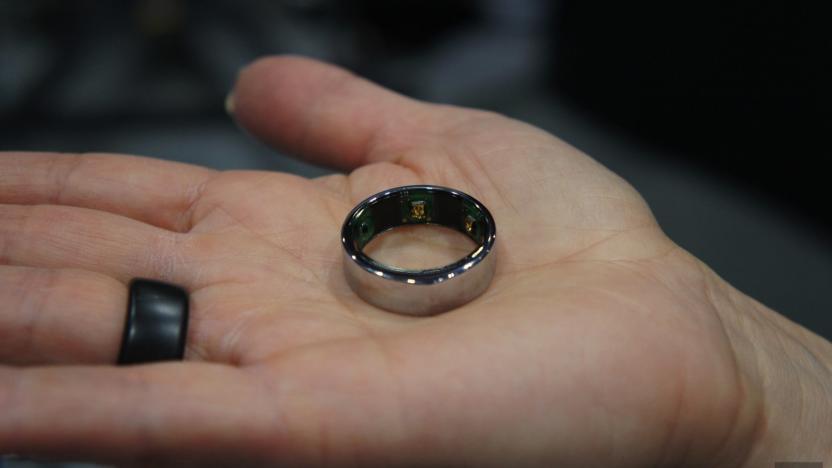vital signs
Latest

ER docs don smart rings to better predict COVID-19 infections
Some 2,000 emergency medical workers in San Francisco are tracking their temperature and other vitals with Oura's smart rings in an attempt to limit the spread of COVID-19, SF Chronicle reports. Oura and researchers from the University of California San Francisco (UCSF) hope to use that data to develop an algorithm that will predict the onset of COVID-19 and help contain the virus.

'Mommy Tummy' simulator takes you from normal to pregnant in two minutes (video)
You can test drive a car before buying it, so why not take the same approach to pregnancy? Such is the idea, apparently, behind the "Mommy Tummy" -- a system that gives women (or men) a taste of what it would feel like to have a bun in the oven, even if they haven't received any lovin'. Developed by researchers at Japan's Kanagawa Institute of Technology, this simulator invites users to don a jacket replete with rubber balloons, vibrators, a water bag and other things you'd expect to find in Buffalo Bill's basement. Once strapped on, the jacket's midsection gradually expands as it swells with warm water funneled in from an adjacent tank, resulting in an immaculately conceived baby bump. A compressor, meanwhile, slowly augments the jacket's chest area, while a separate array of balloons rapidly inflate and deflate, thereby mimicking the kicking and side-to-side movements of a real-life fetus. KIRF mothers can monitor their KIRF baby's vital signs on a monitor, though they'll have to pay close attention. Unlike real pregnancies, the Mommy Tummy's gestation period lasts a merciful two minutes, giving your boyfriend just enough time to formulate a coherent response. Must-see video footage after the break. Update: Turns out our bros at Joystiq got some hands-on time with this bundle of joy at TGS. Check it out. [Image courtesy of Toutlecine.com]

GumPack wearable vitals monitor: the new MedicAlert bracelet?
It may not have the charm or good looks of, say, the uBOT-5, but a new wearable vital signs monitor could cut back on doctor's visits for the chronically ill. Produced by a Kansas State University student, the GumPack -- known as such for its size -- is a multi-sensor monitoring device that fits in the palm of your hand and relays vital stats to your doctor via the internet. Along with a built-in camera and microphone for record keeping, as well as WiFi capabilities for connectivity, the battery-powered GumPack will sport various sensors, like a reflectance pulse oximeter or a two-thumb ECG. The monitor is still in the concept stage, and will likely not be available for mass-market distribution for years -- if ever -- but with technology like this in the works, the "I've fallen and I can't get up" lady might as well start looking for a new gig.

POWER Watch fan controller with LCD gauges
Racing fans everywhere will surely appreciate the new "POWER Watch" fan controller from Japanese manufacturer Scythe, which displays all of your PC's vital signs on a large, tachometer-like LCD, and which would perfectly complement your NASCAR-branded desktop from Cisnet. Besides letting you tweak fan speeds and constantly monitor your machine's health, the POWER Watch also includes Powered USB capabilities, a few connectivity ports and a handful of memory card slots, which actually seem to be more of a necessity when you consider how this monster will hog all of your free drive bays.

Superfourin wheelchair opens up a new world to the disabled
A radical new GPS-enabled wheelchair with fat tires and four-wheel drive may soon offer disabled individuals the ability to tool around almost any terrain while still being protected by a virtual "tether" to a remote command center. The Superfourin chair, as it's known, is basically a modified ATV with a hybrid engine, on-board computer, and embedded sensors to monitor both vital signs and vehicle status, and was developed by Germany's Fraunhofer Institute for Information and Data Processing IITB in conjunction with Otto Bock HealthCare GmbH. Designed mostly for deployment in fleets for group outings into Mother Nature's thoughtlessly unpaved terrain, the Superfourin was also given high marks for solo use from its multiple sclerosis-afflicted test driver, who was able to enjoy the Thüringer Forest alone with his family for the first time in years.[Via Gizmag]


